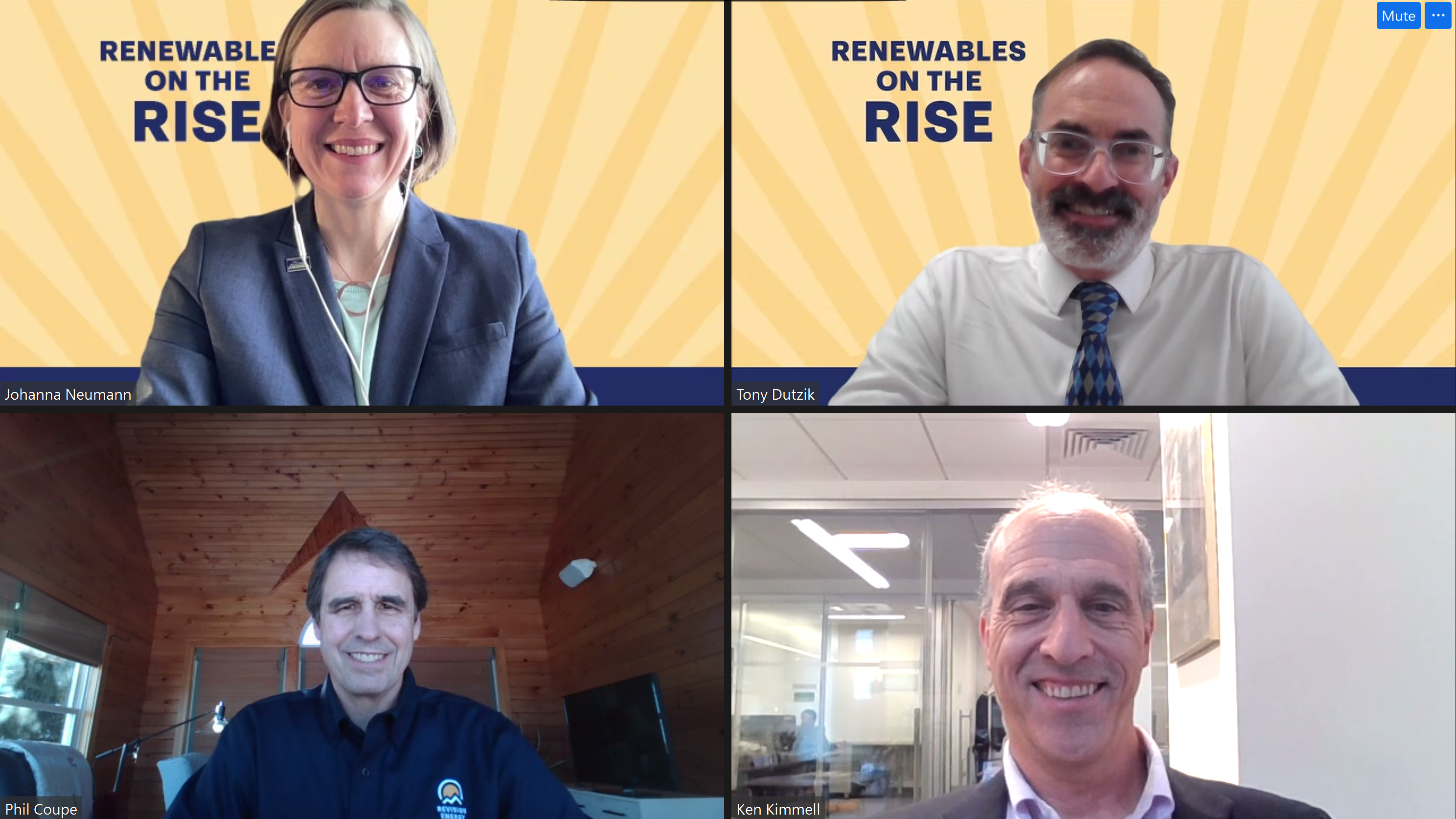
What’s happening in states to advance clean energy homes?
Here's a run-down of state policies in play this session that would reduce pollution and lower utility bills

In addition to driving our overall clean energy program, one of the roles I play at Environment America is supporting the work of our state organizations to make our vision for a cleaner, greener future come to life.
At this point it’s well documented that we have the ability to power our society with 100% renewable energy from the sun, the wind and the warmth of the Earth. One step to realizing that vision is making sure our homes, workplaces and other buildings are ready to use the renewable energy we harness. We have a ways to go toward that effort. In 2019, three out of every four American homes still relied on fossil fuels for heating, hot water or to run appliances. That fossil fuel dependence contributes to a host of environmental and public health problems, including global warming.
At a time when renewable energy sources are more widely available and more affordable than ever, making sure our buildings can run on electricity created from the power of the sun and the wind is the next phase of America’s clean energy journey.

In states across the country, lawmakers, environmental and consumer advocates are working to bring about this transition. Below, I highlight a few key efforts playing out this spring:
In Maryland, the Climate Solutions Now Act offers Maryland policymakers a clear path to switching their communities to clean, green renewable energy. The bill, SB528 in the Senate and companion bills in the House, would advance specific steps to help make sure more of Maryland’s buildings are ready to run on clean energy. Specifically, the legislation would:
- Sets goals for 60% global warming emissions reductions by 2030, and net zero emissions by 2045.
- Create a Building Emissions Performance Standard for buildings 25,000 sq. ft and larger to reduce emissions from state-owned buildings to net-zero by 2035and privately-owned buildings to net-zero by 2040, and creates a pilot program for net-zero schools.
- Establish a Building Energy Transition Implementation Task Force to study and make recommendations regarding the reduction of global warming pollution from buildings and retrofits of existing buildings through tax credits, subsidies, and other state support.
- Transition state government vehicles and school buses to electric vehicles.
- Incentivise Community Solar for low and moderate income customers through tax incentives.
In Colorado, an energy buildings bill is in the works that would pave the way for all-electric buildings to be built across the state. Unfortunately, in its current form, the bill would allow some new construction powered by the combustion of gas.
Meanwhile, several bills currently being considered in Massachusetts provide crucial opportunities to move towards cleaner, greener homes. They include:
- The Better Buildings Act, which would require large residential and commercial buildings to report their energy consumption to the Department of Energy Resources (DOER) and to reduce their energy use and greenhouse gas emissions over time. The least energy efficient of these would be required to reduce their energy use or greenhouse gas emissions by at least 20% over five years. These standards will achieve an 80% emissions reduction from large buildings by 2040.
- The 100% Clean Act, which would commit Massachusetts to use 100% clean energy for heating by 2045. It would also require new homes to be built fossil-fuel-free by 2025, and extend the same requirement to commercial buildings by 2030.
Top leaders in the Legislature — including the Senate President, Speaker of the House, and chairs of the energy committee — have already expressed interest in passing climate legislation this session. But without a concerted effort to push for ambitious policy, the Bay State could end up with a watered-down bill that fails to meet the challenges of the moment.
In Connecticut, the Housing Committee in the state legislature recently proposed to phase out fossil fuel in new residential construction in Connecticut. Advocates are now working to usher that concept through the process before the legislature wraps up its session on May 4th, 2022.
In New York, advocates are working to expand NYC’s requirement that new construction doesn’t use fossil fuels statewide. New York Governor Kathy Hochul announced her support for the the idea in a policy blueprint that calls for the state to pass legislation requiring all new buildings to use zero-emissions sources of heat. Hochul also laid out a new target of electrifying 2 million homes by 2030, which would entail a tenfold increase in the current rate of adoption of electric heat. One key point of contention right now is whether the bill would take effect immediately or wait until 2027 for an implementation date.
More resources:
What it’s like to install a heat pump?
Clean energy tech explained: induction stove
Clean energy tech explained: heat pump hot water heater
Topics
Authors
Johanna Neumann
Senior Director, Campaign for 100% Renewable Energy, Environment America
Johanna directs strategy and staff for Environment America's energy campaigns at the local, state and national level. In her prior positions, she led the campaign to ban smoking in all Maryland workplaces, helped stop the construction of a new nuclear reactor on the shores of the Chesapeake Bay and helped build the support necessary to pass the EmPOWER Maryland Act, which set a goal of reducing the state’s per capita electricity use by 15 percent. She also currently serves on the board of Community Action Works. Johanna lives in Amherst, Massachusetts, with her family, where she enjoys growing dahlias, biking and the occasional game of goaltimate.
Find Out More

Key takeaways from Renewables on the Rise: Success Stories

Which 10 American retailers can lead the way on rooftop solar?

More rooftop solar, less red tape


